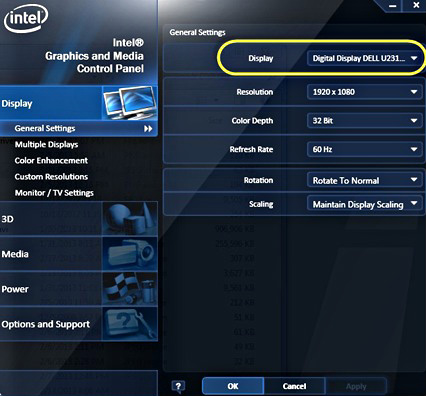
- #How to install intel graphics driver windows 8.1 install#
- #How to install intel graphics driver windows 8.1 update#
- #How to install intel graphics driver windows 8.1 driver#
- #How to install intel graphics driver windows 8.1 upgrade#
#How to install intel graphics driver windows 8.1 install#
Many Windows 8.1 drivers will install in Windows 10 without incident if there is no Windows 10 driver.
#How to install intel graphics driver windows 8.1 driver#
Method 1: Download and install the Windows 8.1 driver For information, refer to Dell Knowledge base article, " Installing Windows Older Printer Drivers in Windows 10." Note: Not every printer has Windows 10 or even Windows 8 or 8.1 drivers, some only have older Windows drivers, these may still allow you to use your printer in Windows 10 using compatibility mode.
#How to install intel graphics driver windows 8.1 update#
Only drivers that require an update are listed under the Windows 10 section of the drivers page. This driver is made available on the Dell Drivers and Downloads page for the tested computer and is also added to Windows Update. If the latest Windows 7 SP1 or Windows 8.1 drivers for that computer do not work correctly, Dell has created a version of the driver for Windows 10.
#How to install intel graphics driver windows 8.1 upgrade#
Computers that are tested for upgrade to Windows 10 from older operating systems (Windows 7 SP1 and/or Windows 8.1 Update) have been tested to ensure that the latest drivers available on the Dell Drivers and Downloads web site for those operating systems work correctly in Windows 10. When a computer is upgraded to Windows 10, the existing hardware drivers on the computer are carried over to the new operating system. No additional drivers should need to be installed after upgrade. Many tested systems have no Windows 10 drivers that are listed on the Dell Drivers and Downloads website, as the latest Windows 7 SP1 and/or Windows 8.1 drivers work normally in Windows 10. Why are there no Windows 10 drivers for my tested computer? This article explains the driver testing process for upgrade to Windows 10, and describes the process to install drivers for Windows 8.1 on a computer that is upgraded to Windows 10. Manually update the driver using Device Manager.Extract and install the vendor executable.


You can manually change to OpenGL if you suspect an issue with your driver. * ArcGIS Pro will automatically use OpenGL if DirectX requirements are not met. Recommended: OpenGL 4.5 with the ARB_shader_draw_parameters, EXT_swap_control, EXT_texture_compression_s3tc, and EXT_texture_filter_anisotropic extensions Minimum: OpenGL 4.3 with the ARB_clip_control and EXT_texture_compression_s3tc extensions Minimum: DirectX 11, feature level 11.0, Shader Model 5.0 By default, the visualization cache is written to the user profile’s \Local subfolder, so it does not roam with the user profile if roaming profiles are enabled by your system administrator.

The temporary visualization cache for ArcGIS Pro can consume up to 32 GB of space, if available, in the user-selected location. If you're using a notebook computer with an integrated GPU, consider increasing the system RAM to compensate for the use of shared memory. Recommended: 32 GB or more of free space on a solid-state drive (SSD) A multithreaded 2-core CPU will have four threads available for processing, while a multithreaded 6-core CPU will have 12 threads available for processing. Simultaneous multithreading, or hyperthreading, of CPUs typically features two threads per core. Minimum: 2 cores, simultaneous multithreading


 0 kommentar(er)
0 kommentar(er)
